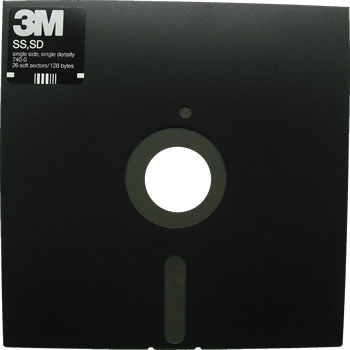
1967 IBM was planning to develop a portable data carrier, which on the one could
easily inject code into their System/370 and was also cheap to produce, so
customers could be supplied with software updates.
The first floppy disk was
developed in 1969 by a team of researchers led by Alan Shugart. The disks were 8
inches high, which corresponds to 200 mm, and had a capacity of 80 kilobytes
(KB). The first floppy drives, however, could only read but not write. This
made them still not capable to the older storage media such as punch cards
and magnetic tapes. Although on a floppy disk was enough space for data,
which had to be written on about 1000 punch cards.
In 1972 Memorex solved this problem and released a drive (Memorex 650), with
which it was possible to write floppy disks. At this time, Alan Shugart no
longer worked for IBM but for Memorex and was significantly invovled in this
development.
One year later IBM released their read-/write drive, the 33FD. In
this drive the write head was provided with a teflon coating, resulting in
increased life of the storage media. Trough this and some other developments,
the volume of data on disks could be increased up to 250KB. The teflon coating
on the writing instruments and the disks is known as the Single Sided Single
Density format (SSSD-format).
In 1973, Shugart left Memorex and started his own
business, Shugart Associates. That company was one of the leaders and developed
the SA800, which became the industry standard in the field of eight inch
floppy disk systems. The problem with the drives of that time was, that they
were almost more expensive than a full computer. This meant that usually
punch cards and magnetic tapes were used as "removable storage media".
1976, IBM
introduced the Double Sided Single Density (DSS) 500 KB format. One year later
IBM released the 1 to 1.2 MB Double Sided Double Density format (DSDD-format).